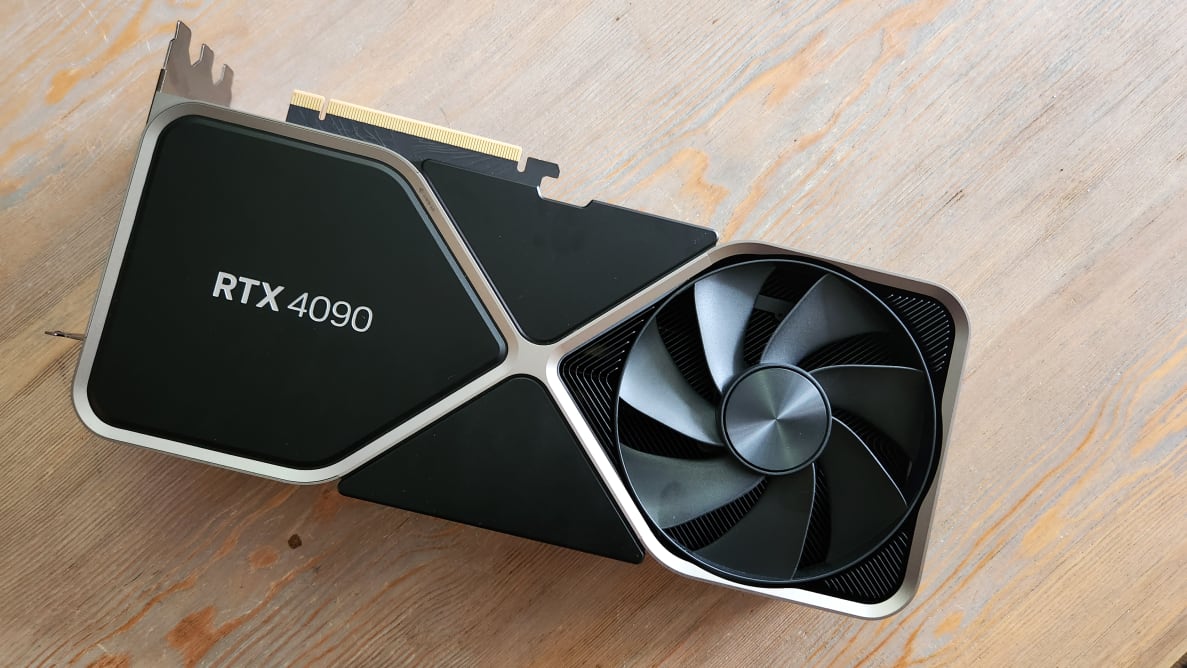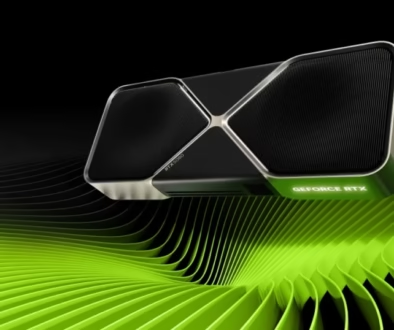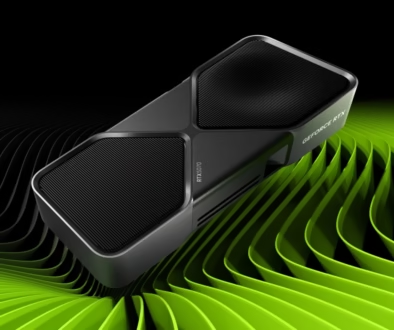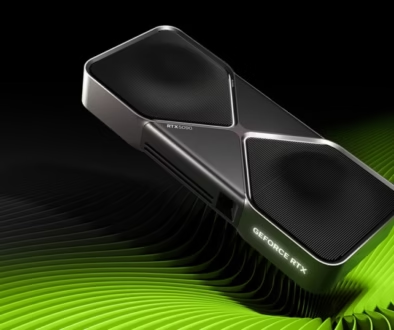RTX 4090 vs RX 7900 XTX: Ultimate GPU Showdown for Gamers
When you purchase through links on our website, we may earn an affiliate commission.
Now, I know what some of you are thinking: “Wait a minute, isn’t this comparison a bit unfair? The RX 7900 XTX is more of a competitor to the RTX 4080, right?” And you’d be absolutely correct! In terms of pricing and market positioning, the RX 7900 XTX is indeed more closely aligned with the RTX 4080. But here’s the thing – these are the top dogs, the cream of the crop from both NVIDIA and AMD. So why not pit them against each other and see how they stack up?
It’s like comparing a high-end sports car to a luxury supercar. Sure, they’re in different price brackets, but they’re both the pinnacle of what their respective manufacturers have to offer. And let’s be honest, who doesn’t love a David vs Goliath story?
One of the big questions we’ll be tackling is whether the RTX 4090’s higher price tag is justified by its performance. Is it worth emptying your wallet for those extra frames, or does the RX 7900 XTX offer a more balanced price-to-performance ratio? Trust me, I’ve agonized over this decision myself!
Specifications Face-Off
| Specification | NVIDIA RTX 4090 | AMD RX 7900 XTX |
|---|---|---|
| Architecture | Ada Lovelace | RDNA 3 |
| Manufacturing Process | TSMC 4N | TSMC 5nm + 6nm |
| Transistor Count | 76,300 million | 57,700 million |
| CUDA Cores / Stream Processors | 16,384 | 6,144 |
| RT Cores / Ray Accelerators | 128 (3rd Gen) | 96 (2nd Gen) |
| Tensor Cores | 512 (4th Gen) | N/A |
| Base Clock | 2.23 GHz | 1.9 GHz |
| Boost Clock | 2.52 GHz | 2.5 GHz |
| VRAM | 24 GB GDDR6X | 24 GB GDDR6 |
| Memory Bus Width | 384-bit | 384-bit |
| Memory Bandwidth | 1,008 GB/s | 960 GB/s |
| TDP | 450W | 355W |
| Recommended PSU | 850W | 750W |
| PCIe Interface | PCIe 4.0 x16 | PCIe 4.0 x16 |
| MSRP | $1,599 | $999 |
Looking at this table, it’s clear that the RTX 4090 obviously packs much better specs than the RX 7900 XTX across the board. The RTX 4090 comes out swinging with significantly more CUDA cores, higher clock speeds, and faster memory. It’s a beast of a card that outclasses the RX 7900 XTX in raw specifications. However, it’s important to note that the RX 7900 XTX still packs serious firepower of its own, especially when you consider its lower TDP and substantially lower price point. While it can’t match the RTX 4090 spec-for-spec, it’s designed to offer strong performance at a more accessible price point.
NVIDIA’s Ada Lovelace architecture, with its dedicated RT and Tensor cores, is a powerhouse for ray tracing and AI tasks. AMD’s RDNA 3, on the other hand, takes a different approach with its multi-chip module (MCM) design, which could offer some unique advantages in certain workloads.
While both cards have 24GB of VRAM, the RTX 4090 uses faster GDDR6X memory, giving it a slight edge in bandwidth. However, 24GB is an enormous amount of VRAM for both cards, which will be future-proofing them for years.
The RTX 4090’s 450W TDP is no joke – I remember when I first installed mine, I could practically hear my power supply whimpering! The RX 7900 XTX, with its 355W TDP, is a bit more modest in its power requirements, which could be a consideration if you’re working with a smaller power supply or are concerned about energy costs.
Lastly, let’s remember the price. The $600 difference in MSRP is significant and could be a deciding factor for many buyers. This is where the RX 7900 XTX really shines in terms of value. If it can come even close to the RTX 4090’s performance in real-world scenarios, it would represent an incredible deal given its much lower price point. For many users, getting, say, 80-90% of the performance for nearly 40% less cost could make the RX 7900 XTX a far more attractive option.
Gaming Performance
Before we dive into the benchmark results, let’s take a look at the test system specifications used for these comparisons:
- CPU: Ryzen 7 7800X3D
- RAM: 32GB DDR5 6000 CL30
- SSD: Samsung 980 Pro
- PSU: Thermaltake 1650W Toughpower GF3
Now, let’s check out how these GPUs perform across different resolutions. All games were tested at their highest settings, with ray tracing enabled where available.
4K Gaming Performance
| Game | RTX 4090 | RX 7900 XTX | Performance Difference |
|---|---|---|---|
| Cyberpunk 2077 4K (RT Ultra) with DLSS/FSR Performance | 103 | 56 | 83% |
| Resident Evil 4 Remake 4K Max | 126 | 91 | 38% |
| Returnal 4K Epic | 112 | 93 | 20% |
| Forspoken 4K Ultra-High | 81 | 57 | 42% |
| The Last of Us Part 1 4K Ultra | 87 | 59 | 47% |
| A Plague Tale Requiem 4K Ultra | 88 | 64 | 38% |
| Star Wars Jedi Survivor 4K Epic (RT On) | 76 | 50 | 34% |
| Lords of the Fallen 4K Ultra | 53 | 37 | 43% |
| Remnant 2 4K Ultra | 65 | 56 | 16% |
1440p Gaming Performance
| Game | RTX 4090 | RX 7900 XTX | Performance Difference |
|---|---|---|---|
| Cyberpunk 2077 1440p (RT Ultra) | 75 | 37 | 102% |
| Resident Evil 4 Remake 1440p Max | 189 | 138 | 36% |
| Returnal 1440p Epic | 167 | 152 | 10% |
| Forspoken 1440p Ultra-High | 132 | 99 | 33% |
| The Last of Us Part 1 1440p Ultra | 140 | 95 | 47% |
| A Plague Tale Requiem 1440p Ultra | 164 | 125 | 31% |
| Star Wars Jedi Survivor 1440p Epic (RT On) | 120 | 80 | 50% |
| Lords of the Fallen 1440p Ultra | 90 | 68 | 32% |
| Remnant 2 1440p Ultra | 117 | 100 | 17% |
1080p Gaming Performance
| Game | RTX 4090 | RX 7900 XTX | Performance Difference |
|---|---|---|---|
| Resident Evil 4 Remake 1080p Max | 204 | 163 | 25% |
| Returnal 1080p Epic | 205 | 194 | 6% |
| Forspoken 1080p Ultra-High | 162 | 129 | 26% |
| The Last of Us Part 1 1080p Ultra | 150 | 116 | 29% |
| A Plague Tale Requiem 1080p Ultra | 219 | 171 | 28% |
| Star Wars Jedi Survivor 1080p Epic (RT On) | 150 | 111 | 35% |
| Lords of the Fallen 1080p Ultra | 118 | 97 | 21% |
| Remnant 2 1080p Ultra | 157 | 133 | 18% |
Looking at these benchmark results and considering the pricing, we can draw some important conclusions. The RTX 4090 consistently outperforms the RX 7900 XTX across all resolutions, with the gap being most prominent at 4K and in ray tracing scenarios. However, it’s crucial to consider the price difference. Based on MSRPs, the RTX 4090 is about 60% more expensive than the RX 7900 XTX. In today’s market, the price difference is even more stark, with the RTX 4090 often costing more than double the RX 7900 XTX.
It’s important to note that while the RTX 4090 is significantly more expensive, it rarely delivers double the performance of the RX 7900 XTX. The only scenarios where we see such a large gap are in heavy ray tracing workloads, like Cyberpunk 2077. This raises an important question: is the RTX 4090 worth it? Check this article to see our detailed answer to this question. The RX 7900 XTX obviously offers better performance per dollar in the vast majority of games. It delivers very strong performance, especially at 1440p and 1080p, and even holds its own at 4K in most titles.
The RTX 4090 does have several additional advantages beyond raw performance. NVIDIA’s DLSS technology currently offers superior image quality compared to AMD’s FSR, which can be a significant factor in both performance and visual fidelity. Ray tracing is another area where the RTX 4090 excels. The RTX 4090 also benefits from unique features like NVIDIA Broadcast, which is excellent for streamers, and better support for hardware-accelerated ray tracing in creative applications. Additionally, the NVENC encoder on the 4090 is slightly ahead, especially for H.264 and H.265 encoding, which can be crucial for streamers or video editors who do a lot of encoding work. AMD counters with Smart Access Memory, which can provide a nice performance boost when paired with a Ryzen CPU.
When it comes to power consumption, the RX 7900 XTX consistently draws around 350 watts at max load, while the RTX 4090 draws about 450 watts at max load. However, in practice, the RTX 4090 often operates more efficiently. In many games, it uses between 300 and 350 watts, sometimes even less, while still delivering higher frame rates. This demonstrates the RTX 4090’s superior energy efficiency in real-world gaming scenarios, often providing more performance per watt.
For 4K gaming with maxed-out settings in the latest games, the RTX 4090’s extra power can be beneficial. It also has a clear advantage in heavy ray tracing workloads. However, for most other gaming scenarios, including 1440p and 1080p gaming, the RX 7900 XTX provides excellent performance at a much better value.
RTX 4090 Pros and Cons

Pros:
- Superior performance across all resolutions, especially at 4K
- Excellent ray tracing capabilities
- DLSS 3.0 technology for enhanced performance and image quality
- More energy-efficient in many gaming scenarios
- Better encoder (NVENC) for streaming and video editing
- NVIDIA Broadcast features for streamers
- Better support for hardware-accelerated ray tracing in creative applications
- Higher VRAM bandwidth
Cons:
- Significantly higher price point
- Higher power consumption at peak loads (up to 450W)
- Larger physical size, may not fit in all cases
- Overkill for 1080p and some 1440p gaming scenarios
- Requires a more powerful PSU
RX 7900 XTX Pros and Cons

Pros:
- Excellent price-to-performance ratio
- Strong performance at 1440p and 1080p resolutions
- Competitive 4K gaming performance in many titles
- Lower power consumption (around 350W max)
- Smaller physical size, more compatible with various PC cases
- Smart Access Memory for performance boost with Ryzen CPUs
- A more affordable option for high-end gaming
Cons:
- Lags behind in ray tracing performance
- FSR technology is not as advanced as NVIDIA’s DLSS
- Less efficient in some gaming scenarios
- Fewer specialized features for content creation and streaming
- Limited options for hardware-accelerated ray tracing in professional applications
- Slightly lower VRAM bandwidth compared to RTX 4090
Conclusion
If budget is a primary concern and you’re looking for the best value, the RX 7900 XTX is a clear choice, offering high-end performance at a more reasonable price point. On the other hand, if money is no object and you demand the absolute best performance regardless of cost, particularly for 4K gaming, ray tracing, and specialized tasks like streaming or video encoding, then there is no competition to the RTX 4090.
While the RTX 4090 is undoubtedly the most powerful consumer GPU available, with additional features that cater to professionals and enthusiasts, the RX 7900 XTX offers a compelling alternative with excellent performance at a significantly lower price point. For most gamers, the RX 7900 XTX represents a better value proposition. However, for those who demand the absolute peak of performance, require specific NVIDIA features, and have the budget to match, the RTX 4090 remains the uncontested champion, especially in 4K and ray tracing scenarios.
To see our full review of the RX 7900 XTX check this article.
Products mentioned in the article:
 RX 7900 XTX | |
 RTX 4080 Super |
Related Comparisons:


